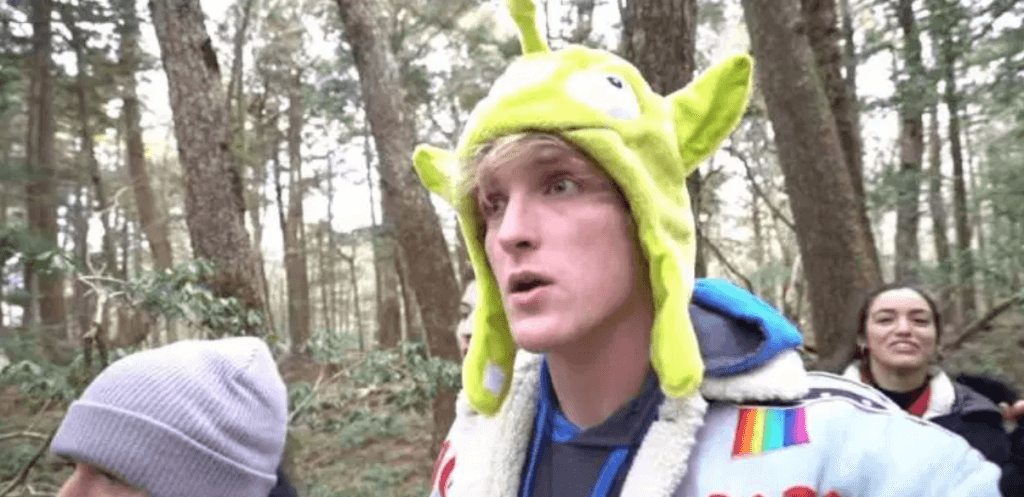
Logan Paul discovers a dead body in a Japanese forest
By Mark Schaefer
I normally don’t dive into the world of teen YouTube stars. I’m interested in the sociological phenomena, but beyond that, I find the incessant camera posing and bro pranks boring. No surprise. This is the new “boy band” and I am not their target audience!
But this week the Internet absolutely blew up after one of its biggest stars, man-child Logan Paul, took his unfiltered view of the world too far, featuring a Japanese suicide victim, hanging from a tree, in one of his videos.
Stars from all over the Internet weighed in over this incredible insensitivity and his career seems to be derailed, at least for now.
The event has been covered extensively by the mainstream media, so I won’t get into it here. Here’s an article from The Washington Post that can give you some background.
Although this is not my normal blogging topic, the more I thought about it, the more I realized that it is.
If you’re sitting in an executive position out there, here are five marketing leadership lessons you should observe from this scandal:
1. Get outside views
I’m imagining that when Logan Paul was editing this video his co-bros were cheering him on, telling him that he would get a record number of views for this “internet first.”
Perhaps the same thing happened before Dove soap aired their racially-insensitive commercial. When I saw this on television, I thought to myself, “how did that ever get on the air?” Didn’t they run this by legal?
Both of these melt-downs could have been avoided with an outside view of the situation.
“Haters gonna hate.” There’s probably no social media mantra I despise more than this.
Instead of a flag that rallies people to have personal courage, I think “haters gonna hate” discourages people from accepting rational input. If people disagree with you, it normally doesn’t mean they hate you. Maybe they’re trying to help you.
In this case, even if Logan Paul had advice to ditch the video I doubt he would have listened. He has become so big and over-confident he probably saw himself as bullet proof. Anybody who espouses the “haters gonna hate” philosophy is on a road to implosion.
2. The economics of the sensational
There is an unhealthy, underlying issue in this case that’s driving many internet marketers. We monetize directly, or indirectly, from page views. And we will do just about anything for those page views.
Logan Paul makes his money because 5 million people click on his YouTube videos every day. This is the teenage road to riches today: Monetize your daily life.
How are thousands of budding YouTube stars going to attract enough viewers in an era of content shock and overwhelming competition? There seems to be no choice other than to push the limits of taste and common sense.
We see this economic reality of the sensational taking over journalism. Is the danger of that happening in your own company?
British discount store Poundland attracted attention to its brand by posting sexually-provocative pictures of Elf on the Shelf. Is pushing the limits of taste the new normal?

3. The meaning of values
Today, there are dozens of great brand managers scratching their heads wondering what to do about their promotional deals with Logan Paul.
Or maybe they had a deal with Kevin Spacey.
Or Louis C.K. Etc.
After these scandals became public, it became clear that everyone in the industry had heard the stories of sexual misconduct. It would have taken very little vetting to know that aligning with one of these stars meant you were putting your brand at risk. Is it really a surprise to anybody that Logan Paul crossed a line?
The same lesson should be heeded for influencer marketing at any level.
Today, every marketing leader needs to dig beyond “reach and relevance” to examine an influencer’s values. In essence, aligning with an influencer makes that person your company spokesperson. Are you ready to put your brand in their hands without a hard look at their background and what they stand for?
4. The implications of scale
A few years ago, a prominent blogger ranted against social media fakers and illustrated his post with a noose, implying these people should be hanged. It was tasteless, and after a few people complained, he apologized and changed the graphic. Maybe a couple hundred people noticed and he moved on.
All of us have probably observed a professional person doing something bizarre but as long as it is contained to a small group, it’s normally no big deal.
But the bigger you get, the less room for error you have. In fact, if you are a national brand, you have no room for error. The Internet is unforgiving.
Or, is it …
5. The fall-out
Perhaps the biggest marketing lesson from this debacle is still unfolding. Will Logan Paul recover from this incident … and how?
Even in the midst of the melt-down, tens of thousands of fans came to his defense. The controversial video received hundreds of thousands of likes. Isn’t that remarkable?
His fanbase is teens and pre-teens. They expect him to push the limits. Are ethics being re-defined before our eyes? How many parents even know their children subscribe to this soul-less buffoon? Do they care?
Logan Paul has built an indelible emotional connection with his young audience. I think this incident will have little long-term impact on his success, and maybe it will even propel it.
But maybe there’s hope. The YouTube star apologized within a day of the fall-out and even asked fans to stop defending him. He took down the video, he pledged to do better and is actively supporting causes related to mental illness and suicide.
Maybe this time he’s listening.
 Mark Schaefer is the chief blogger for this site, executive director of Schaefer Marketing Solutions, and the author of several best-selling digital marketing books. He is an acclaimed keynote speaker, college educator, and business consultant. The Marketing Companion podcast is among the top business podcasts in the world. Contact Mark to have him speak to your company event or conference soon.
Mark Schaefer is the chief blogger for this site, executive director of Schaefer Marketing Solutions, and the author of several best-selling digital marketing books. He is an acclaimed keynote speaker, college educator, and business consultant. The Marketing Companion podcast is among the top business podcasts in the world. Contact Mark to have him speak to your company event or conference soon.


